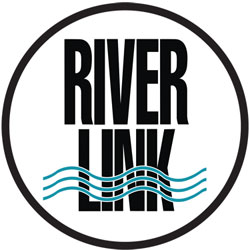Managing Stormwater On Your Property
A major source of water pollution in Western North Carolina is stormwater runoff. This occurs when rain or snow melt runs off impervious surfaces— accumulating pollutants along the way— and is deposited into storm drains which empty directly into our local waterways. Common stormwater pollutants include fertilizers, pesticides, petrochemicals, and sediment. In large part due to the topography of our mountains, sediment from erosion is the primary source of water pollution in Western North Carolina. Once in our waterways, sediment can clog fish gills and cloud the water, making it difficult for predator fish to find their prey. The news isn’t all gloom and doom; we can take simple steps to mitigate stormwater runoff and improve water quality in our region.
Stormwater runoff not only occurs along streets, but also around our homes where it runs off roofs, sidewalks, and parking areas. WaterRICH is a RiverLink Initiative to educate homeowners on how they can manage stormwater runoff on their property. Through the WaterRICH program, RiverLink provides an on-line resource and offers workshops designed specifically for smaller sites and private individuals. WaterRICH gives tutorials on how to design and install stormwater features, such as cisterns, swales, and rain gardens.
Ideally, stormwater runoff would slowly seep into the ground, where pollutants can be naturally filtered from the water by plants and microorganisms in the soil. Rain gardens are a popular stormwater feature for homeowners that facilitate this process. A small depression planted with native shrubs and wildflowers, rain gardens can be an attractive addition to the landscape. If cramped for space, swales are shallow channels that serve a similar purpose, but are smaller compared to rain gardens. Swales can be planted in a similar fashion as a rain garden, but are often sown in grass and maintained by mowing. Cisterns or rain barrels can also be used to capture rainwater from roofs, which can then be used to irrigate lawns and gardens. Utilizing rainwater in this way not only filters any potential pollutants, but also saves homeowners money by reducing potable water use.
By installing stormwater features on a residential site, homeowners can not only improve regional water quality, but also reduce their outside water needs and beautify their landscapes. Which stormwater feature you choose, depends on the site conditions around your home.
Renee Fortner is RiverLink’s Watershed Resources Coordinator. To get started, visit WaterRICH on RiverLink’s website (www.riverlink.org/learn). If you live in the French Broad River watershed, RiverLink also offers WaterRICH presentations for groups. For questions about the program or to schedule a presentation, contact Renee Fortner at (828) 252-8474, Ext. 13 or renee@riverlink.org.
